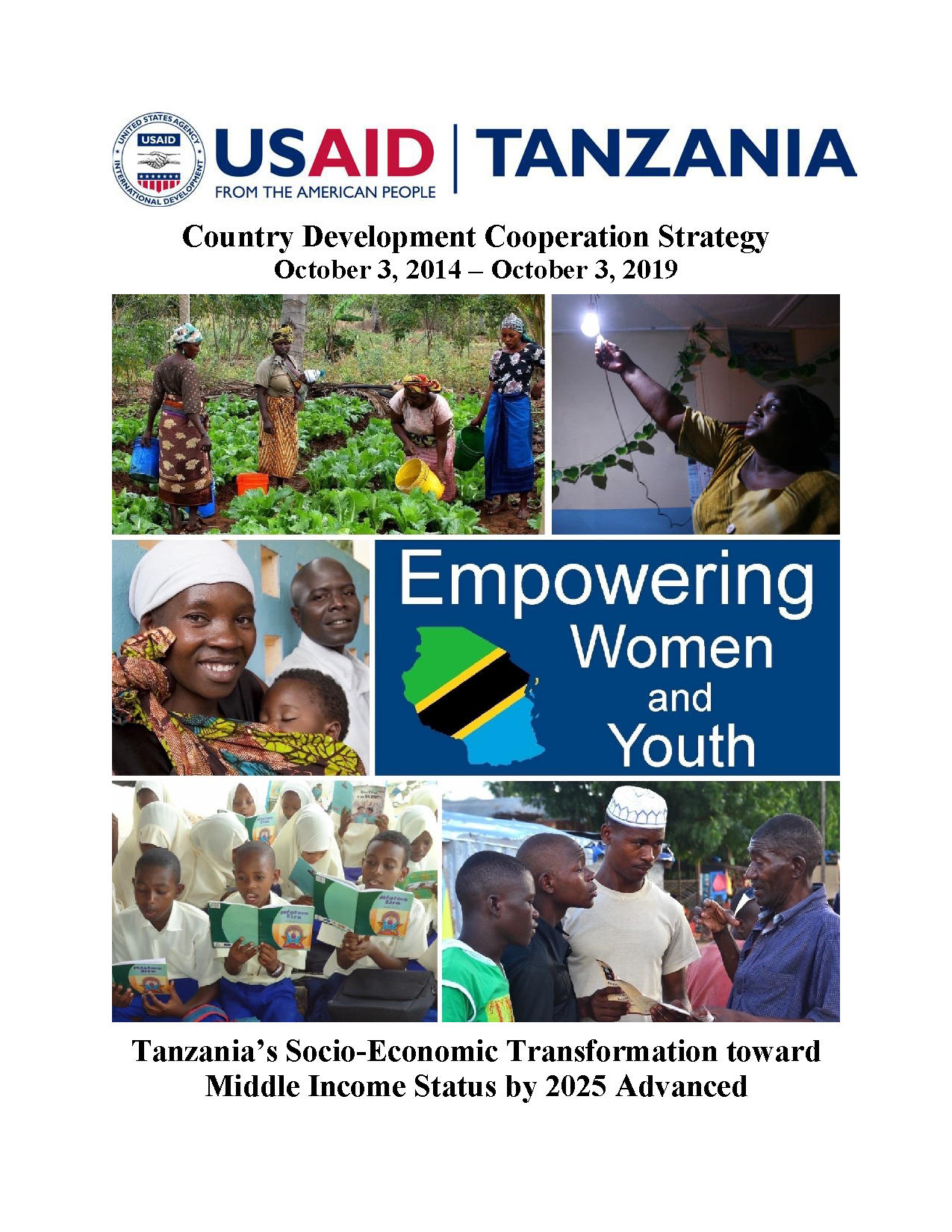Tanzania has one of Africa’s fastest growing economies.
USAID Tanzania CDCS ![]() (pdf - 2 MB)
(pdf - 2 MB)
The per capita gross domestic product (GDP) has increased from $1,025 in 2004 to $1,380 in 2012.1 Yet, widespread poverty persists with 68 percent (2007) of Tanzania’s population living below the extreme poverty line of $1.25 per day. Tanzania’s nearly 7 percent annual national GDP growth since 2000 has been hardly perceptible among Tanzania’s predominantly rural (73 percent) population. Inclusive broadbased growth is stymied by: (a) low productivity growth in labor intensive sectors (agriculture employs 77 percent out of total national employment, but the sector grew just 4 percent per year over the past decade) and (b) an unchanging and high population growth rate. Forty-four percent of Tanzania’s current population of 45 million is under 15 years of age. At the current growth rate, Tanzania’s population is projected to reach 70 million by 2025.5 In addition, women make up fifty percent of the population, yet gender inequities continue to persist: salaries paid to women are on average 63 per cent lower than those paid to men, and when women own businesses, they make 2.4 times less profit than men.
Tanzania has an opportunity in the five-year period of this Country Development Cooperation Strategy (CDCS) to enact policies and promote investments that reduce extreme poverty and advance the country’s socio-economic transformation toward middle income status. By empowering women and youth; sustaining inclusive broad based economic growth; and improving democratic governance, Tanzania stands to make huge gains toward the goals envisioned in the Government of Tanzania’s (GOT) National Strategy for Growth and Reduction of Poverty. This CDCS supports Tanzania’s National Strategy which aims to improve the standard of living and social welfare of Tanzanians; accelerate economic growth and reduce poverty; and promote good governance and accountability.
Tanzania is a front line state and a key partner in President Obama’s Strategy toward subSaharan Africa. Strong partners for over five decades, Tanzania and the United States (U.S.) are working towards a shared vision of improving the quality of life for all Tanzanians. The U.S. Government’s priorities in Tanzania focus on: (1) promoting a transparent and democratic government that respects the full scope of human rights; (2) fostering sustainable and inclusive socio-economic development, including positive health outcomes; and (3) advancing regional peace and security. USAID/Tanzania, as a key foreign affairs agency and member of the U.S. Embassy Dar es Salaam, will advance U.S. strategic priorities in Tanzania through this CDCS.
The U.S. Government is Tanzania’s largest bilateral donor. As such, Tanzania participates in most of the Presidential Initiatives implemented in sub-Saharan Africa, including the President’s Emergency Fund for AIDS Relief (PEPFAR), the President’s Malaria Initiative (PMI), Ending Preventable Child and Maternal Deaths (EPCMD), Power Africa (PA), Trade Africa (TA), Feed the Future (FTF), Global Climate Change Initiative (GCCI), Global Health Initiative (GHI), Partnership for Growth (PFG), Open Government Partnership (OGP), Young African Leaders Initiative (YALI), the Global Development Lab, and the Executive Order on Combating Wildlife Trafficking.
This strategy is the culmination of a process which spanned over two years and included an indepth examination of data, evaluations and assessments in a variety of technical fields, as well as countless meetings and consultations with host country agencies, donors, stakeholders, and U.S. Government entities. In addition to these in-person consultations, the CDCS Results Framework was shared with a broad range of stakeholders and publicly posted on the internet for comment. The CDCS advances USAID’s core values of empowerment and inclusion and key principles of engagement which include partnership, capacity building, integration, and learning.
This strategy’s hypothesis is – if Tanzania empowers its women and youth, sustains inclusive broad-based economic growth, and makes governance more effective, its socio-economic transformation toward middle income status by 2025 will be significantly advanced. In fact, reducing extreme poverty can best be achieved by capitalizing on Tanzania’s most marginalized, untapped resources, women and youth, and investing in key sectors of the economy, namely agriculture, natural resources and energy. If the hypothesis in this CDCS is realized, Tanzania will have advanced towards “one of the greatest moral aspirations ever imagined…answering President Obama’s historic call to end extreme poverty in the next two decades.”
Read the full report [pdf]









Comment
Make a general inquiry or suggest an improvement.